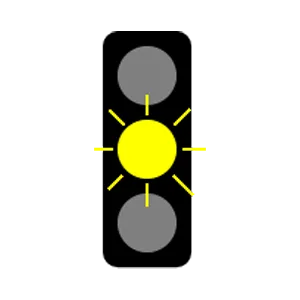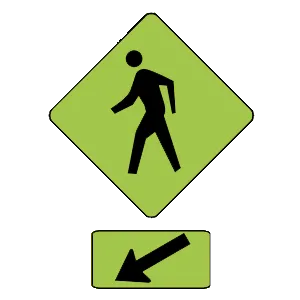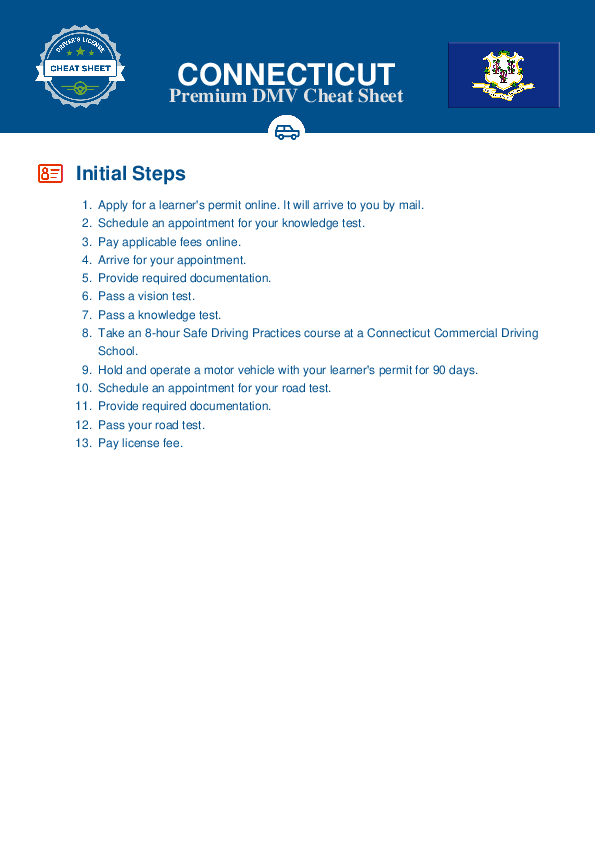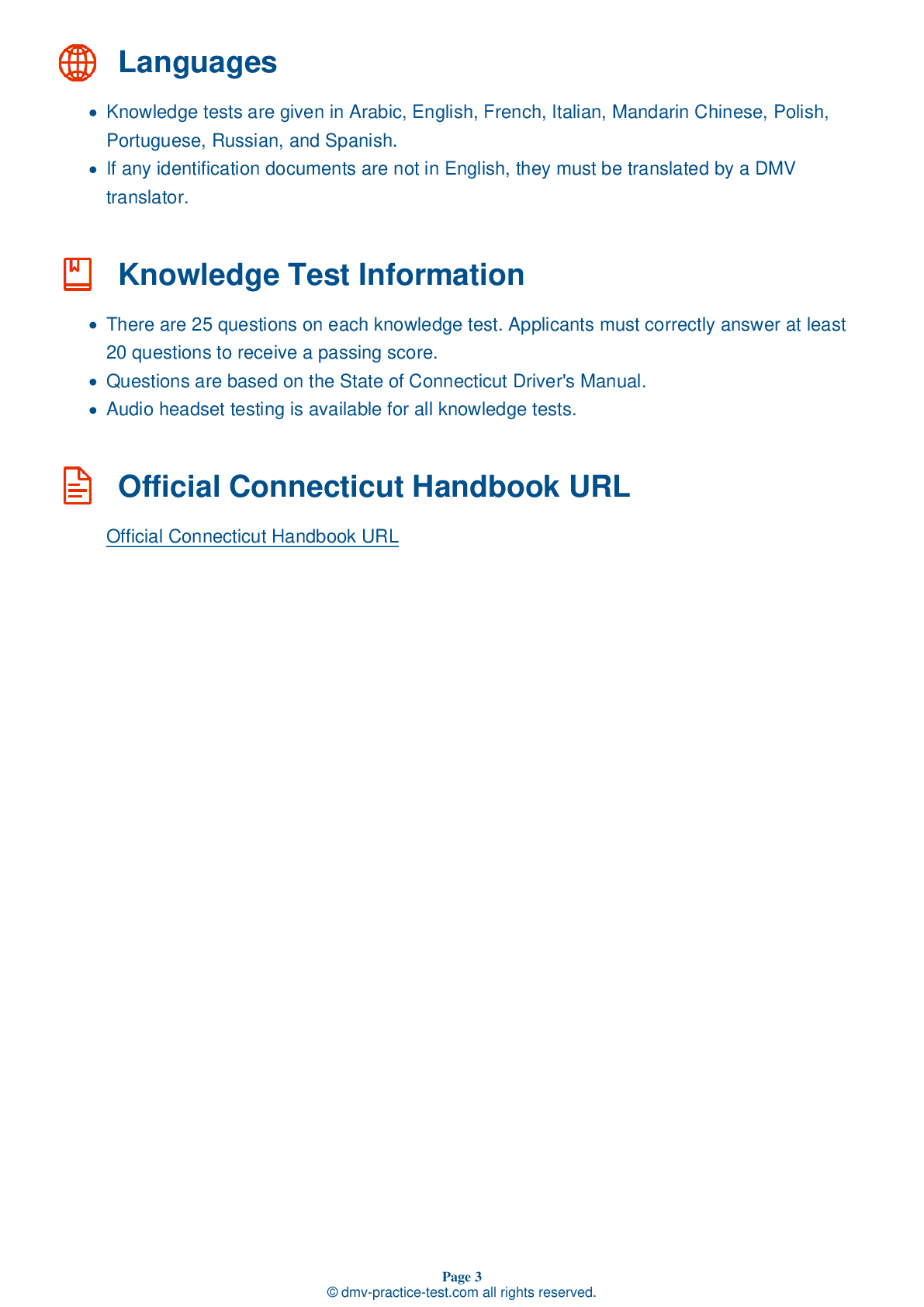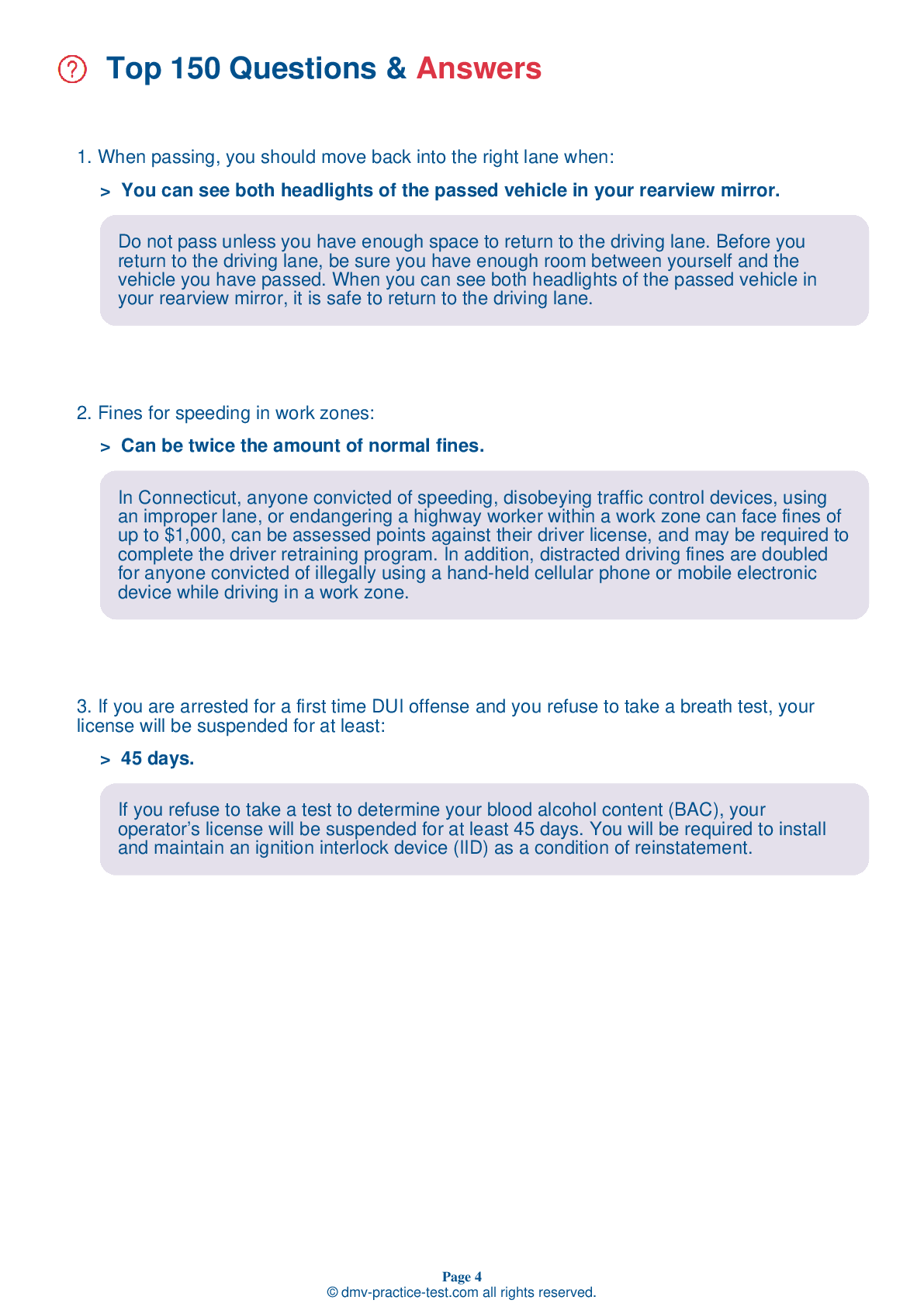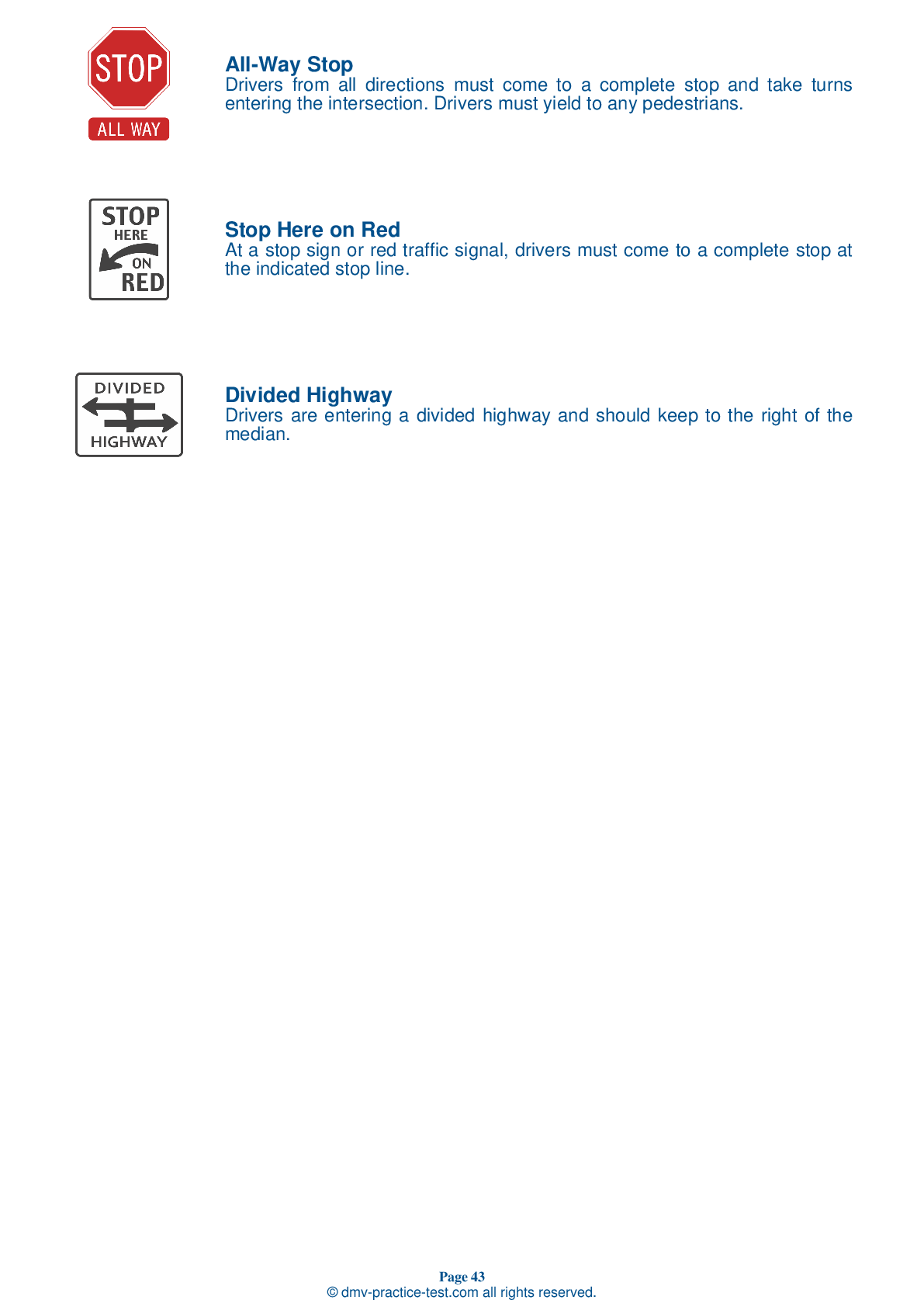FREE Connecticut DMV Practice Test #13 Page 3 of 3
This set of Connecticut DMV practise tests was just updated for January 2025. It includes questions based on the Connecticut Driver Handbook's most essential traffic signs and regulations for 2025. Use actual questions that are very similar (often identical!) to the DMV driving permit test and driver's licence exam to study for the DMV driving permit test and driver's licence exam.
Each practise test question has a hint and explanation to assist you in remembering the concepts. The written component of the official DMV test will include questions about road rules, traffic signs, and driving statutes, as well as information from the Driver Handbook.
To achieve the required passing grade, you must correctly answer 20 of the 25 questions. Take our DMV practise exam to help you prepare for your Connecticut instruction permit or driver's licence.
The DMV exam is available in several languages.
Using any form of testing help will result in an automatic fail, and the DMV may take further action against your driver's licence, so avoid it.
17 . You are preparing to exit the interstate. When should you start reducing your speed?
When leaving an interstate, you should maintain your speed until you enter the deceleration lane, at which point you should reduce your speed to the exit ramp's posted advisory speed.
18 . The best way to avoid a dangerous situation while driving is to:
Always be aware of what is happening around your vehicle. Constantly observing your surroundings to the front, sides, and rear of your vehicle will help you see problems that may require you to change speed or roadway position.
19 . If your vehicle starts to lose traction because of water on the road, you should:
When driving in heavy rain at speeds as low as 30 mph, your tires may lose all contact with the road and instead ride up on a layer of water above the surface of the road. This is called "hydroplaning." If your vehicle starts to hydroplane, slow down gradually and do not apply the brakes.
20 . Motorcycle/scooter/moped operators:
Drivers of passenger vehicles share the road with many other users, including motorcycle, moped, and scooter riders. Watch for these slow-moving vehicles ahead of you so you have time to change lanes or slow down safely. Slowing too suddenly can cause a crash.
21 . When a school bus is stopped on the road ahead to load or unload children, you must:
When a school bus is stopped on the road ahead with its lights flashing and its stop arm extended, you must come to a complete stop and wait to proceed until the lights have stopped flashing and the stop arm is withdrawn. Even after the bus begins to move again, do not proceed until you are sure there are no children crossing the road ahead of you.
22 . A flashing yellow light at an intersection means you should:
